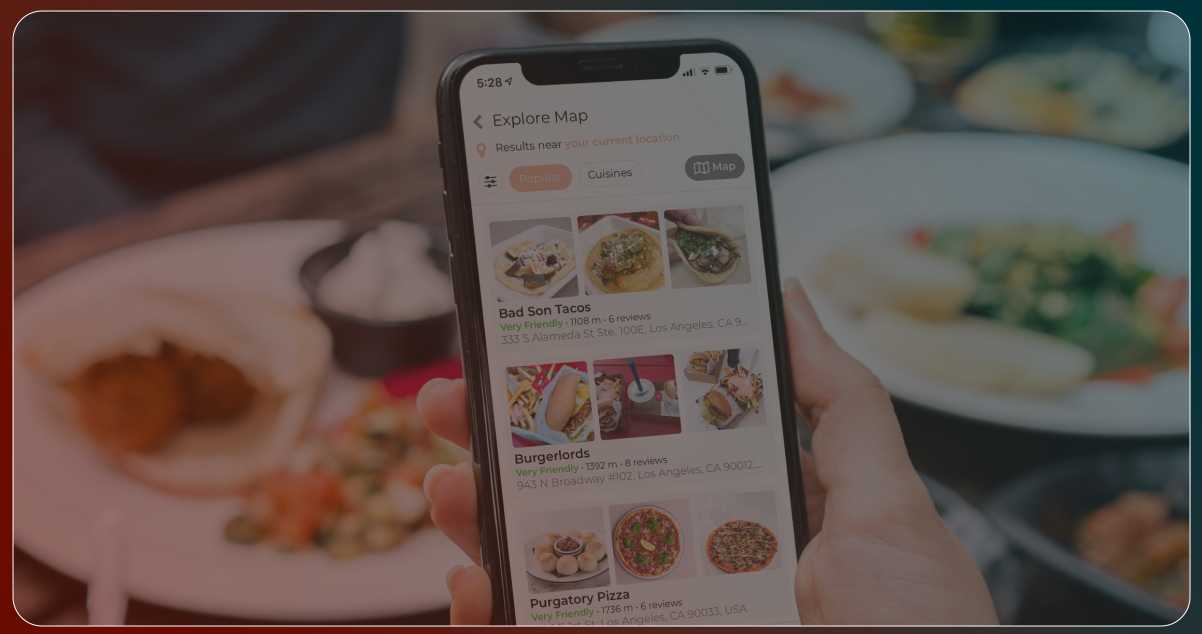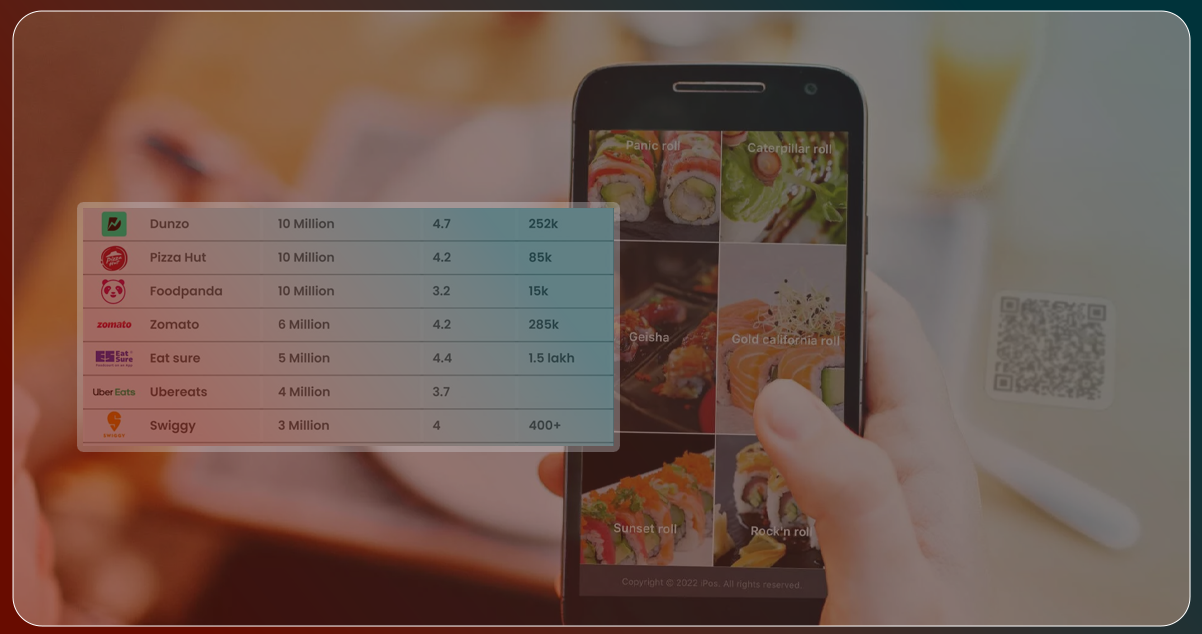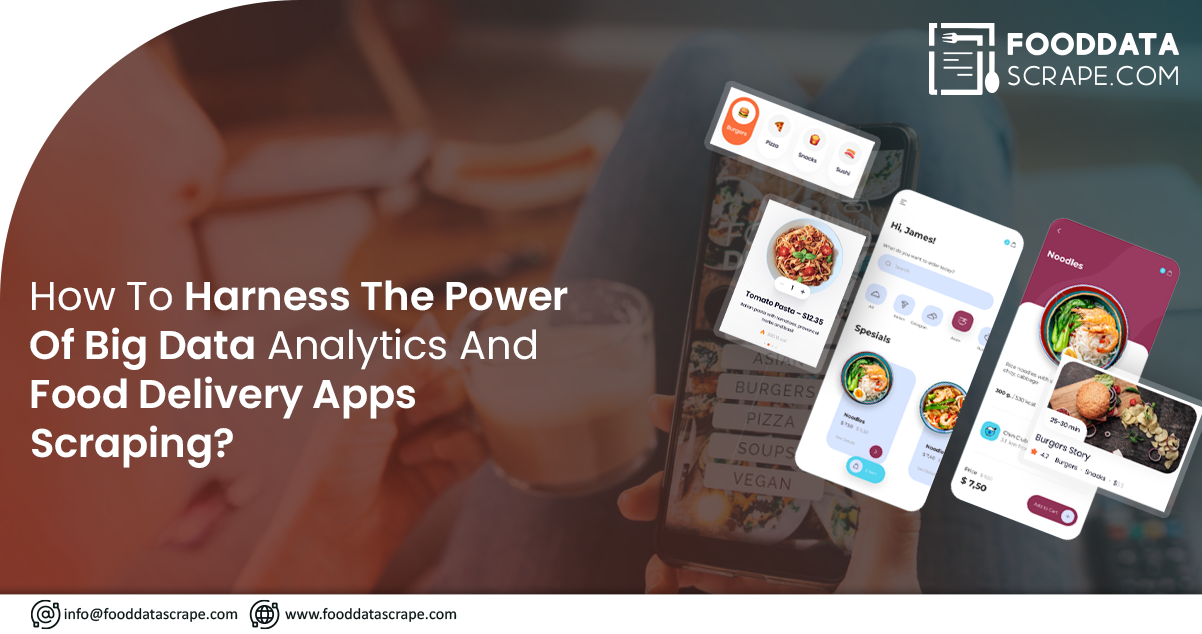Maintaining a competitive edge is paramount for success in the rapidly evolving realm of food delivery. Food delivery applications have transformed how people order food, offering convenience, speed, and various choices. Projections indicate that the food delivery market is poised for substantial growth, with an expected compound annual growth rate (CAGR) of 12.67% between 2023 and 2027, potentially reaching a market size of approximately US$1.65 trillion by 2027.
App developers and businesses in this industry have recognized the potential of harnessing big data analytics to thrive. This article delves into how food delivery apps leverage big data analytics to enhance customer experiences, streamline operations, and propel business expansion, ultimately redefining their competitive position.
The Role of Analytics in the Development of Food Delivery Apps

Assessing Customer Behavior: Big data analytics and food delivery app scraping can gauge customer interest in your brand, assess food delivery performance, and analyze customer retention. It facilitates the collection and interpretation of brand reviews and feedback from various social media platforms, including Twitter, Instagram, Facebook, and forums. This wealth of data empowers CEOs and marketing experts to make informed business decisions based on customer insights.
Improving Delivery Efficiency and Cost-effectiveness: Integrating Data Science and analytics into the process simplifies determining and optimizing time and cost efficiency. In unforeseen circumstances, businesses can swiftly make decisions to adapt and favorably respond to the situation. Meeting customer expectations for timely and accurate deliveries is paramount, and understanding customer needs helps achieve this goal.
Location-based Data Analysis: Restaurant data scraping tools gather location-based data, including user locations, delivery times, and restaurant locations. This data aids in streamlining the delivery process by predicting delivery times, identifying high-demand areas and times, and optimizing delivery routes.
Performance Evaluation: Analytics tools monitor app performance, tracking app crashes, response times, and server uptime. This data-driven approach enhances app performance by identifying and addressing bottlenecks.
Enhancing ROI on Deliveries: Prominent players like Starbucks and McDonald's in the USA have leveraged big data analytics to enhance the customer experience. They collect customer order and preference data using food delivery data scraping services, helping tailor personalized offers. This data analysis enables companies to comprehend trends and shape their strategies based on the latest trends and preferences, ultimately increasing return on investment.
Market Basket Analysis: Market basket analysis involves forecasting customer behavior based on purchase history and cart contents. It allows for the promotion of combo deals to entice customers to make additional purchases, simplifying their ordering decisions and ensuring satisfaction.
Implementing Intelligent Algorithms for Demand Forecasting: Food delivery apps can predict a customer's next order using intelligent Big Data algorithms. By analyzing a user's browsing history and past order data, the app can anticipate when a customer will likely place their next order, facilitating a seamless ordering experience.
Unleashing Potential: The Influence of Big Data Analytics on Food Delivery Apps

Personalized Recommendations and Enhanced Customer Experiences
Big data analytics has emerged as a powerful tool within food delivery apps, revolutionizing how to offer personalized recommendations to customers. By meticulously scrutinizing extensive datasets, encompassing order histories, customer preferences, and demographic information, these apps can now provide tailor-made food suggestions that resonate with each individual's unique tastes and dietary requirements. This degree of personalization significantly enriches the overall customer experience, simplifying the process of selecting meals.
For instance, individuals who frequently opt for vegetarian cuisine can effortlessly access a thoughtfully curated selection of vegetarian options from diverse restaurants, simplifying their decision-making process. Such precisely targeted recommendations heighten customer satisfaction and foster repeat orders and long-term customer loyalty.
Forecasting Demand and Optimizing Supply
Restaurant data scraping services enable food delivery apps to predict demand patterns accurately. These apps can anticipate peak hours, preferred menu items, and high-demand locations by scrutinizing historical data, weather conditions, local events, and other pertinent factors. This foresight empowers app operators to fine-tune their delivery networks, ensuring an ample workforce and a seamless customer delivery experience.
Moreover, through analyzing customer feedback and ratings, apps can pinpoint restaurants consistently receiving positive reviews and experiencing high order volumes. By forming strategic partnerships with these establishments, delivery apps can offer customers popular food choices while supporting local businesses. Data-driven supply optimization fosters operational efficiency, minimizes delivery times, and reduces the likelihood of order cancellations or delays.
Elevated Operational Efficiency
Food delivery apps generate copious amounts of data throughout the delivery process, from order placement to successful delivery. Big data analytics equips these apps to elevate operational efficiency by providing insights into average delivery time, driver performance, and order accuracy. By closely monitoring these metrics, app operators can pinpoint bottlenecks and streamline processes, resulting in an optimized and cost-effective delivery ecosystem.
For example, if data analysis uncovers specific timeframes of frequent delivery delays, app operators can strategically assign extra delivery personnel during these peak periods to ensure punctual deliveries. This proactive approach, made possible through big data analytics, empowers apps to identify areas for enhancement, refine route planning, and streamline dispatch operations.
Detection and Prevention of Fraud
Scraping food delivery apps often grapple with fraudulent activities, including fake orders and unauthorized credit card usage. Big data analytics proves invaluable in identifying suspicious patterns, aberrant behaviors, and potential instances of fraud by analyzing transactional data and user conduct. Machine learning algorithms can swiftly detect anomalies and flag potentially fraudulent incidents in real time.
By leveraging big data analytics, food delivery apps can implement robust security measures to safeguard customers' sensitive information and prevent financial losses. It cultivates trust and reliability, reassuring customers about the security of their transactions and enhancing the app's reputation.
Data-Driven Business Expansion
Data analytics furnishes food delivery apps with invaluable insights into market trends, customer preferences, and emerging patterns. By dissecting this data using food delivery data scraping, businesses can make informed decisions, unearth growth prospects, and adapt their strategies accordingly. For instance, if data reveals a burgeoning demand for vegan options in a specific region, apps can forge partnerships with vegan eateries or encourage existing partners to expand their vegan menu offerings.
Furthermore, big data analytics assists apps in pinpointing new target markets, refining marketing strategies, and efficiently allocating resources. By comprehending customer behavior, app developers can craft targeted marketing campaigns that reach the right audience with precisely tailored messages at the most reasonable times. This approach amplifies customer acquisition, heightens brand recognition, and expands online business.
Moreover, big data analytics empowers food delivery apps to conduct competitive analyses by benchmarking their performance against industry standards and identifying areas where they can surpass competitors. Armed with these insights, they can differentiate by offering unique features, enhancing service quality, or expanding their delivery networks, ultimately gaining a competitive edge.
Streamlined Inventory Management
Collaborating with numerous restaurants and food vendors in food delivery apps often entails distinct inventory management systems. By harnessing extensive data analytics capabilities, these apps gain real-time insights into inventory levels, facilitating informed decisions regarding menu offerings and item availability.
Food delivery apps can enhance inventory organization processes by analyzing ingredient consumption, dish popularity, and customer demand trends. It reduces food wastage by ensuring that restaurants procure ingredients based on actual demand and adjusting menu selections in response to availability. This data-driven strategy minimizes instances of stockouts, enhances order precision, and elevates the overall efficiency of the food delivery ecosystem.
Utilizing a food delivery data scraper for inventory management, food delivery apps ensure a seamless customer experience by offering diverse choices while minimizing the likelihood of order cancellations due to unavailability.
Conclusion: In the fiercely competitive landscape of food delivery, big data analytics is an indispensable tool for app developers and businesses to thrive. By harnessing the potential of data, food delivery apps can deliver personalized recommendations, optimize their supply and delivery operations, elevate operational efficiency, identify and deter fraudulent activities, and steer their business growth through data-driven strategies. These advantages enhance customer experiences and foster customer loyalty, securing enduring business success.
With the evolution of the food delivery industry, app developers must mix vigorous data analytics capabilities into their platforms. Doing so enables them to maintain a competitive edge, adapt to shifting customer preferences, and consistently provide exceptional service to their user base.
For more in-depth information, feel free to contact Food Data Scrape today! We're also here to assist you with any of your needs related to Food Data Aggregator and Mobile Restaurant App Scraping services. We also provide advanced insights and analytics that offer valuable data-driven perspectives to drive informed decision-making and enhance business strategies.
Get in touch
We will Catch You as early as we recevie the massage
Trusted by Experts in the Food, Grocery, and Liquor Industry






























































































